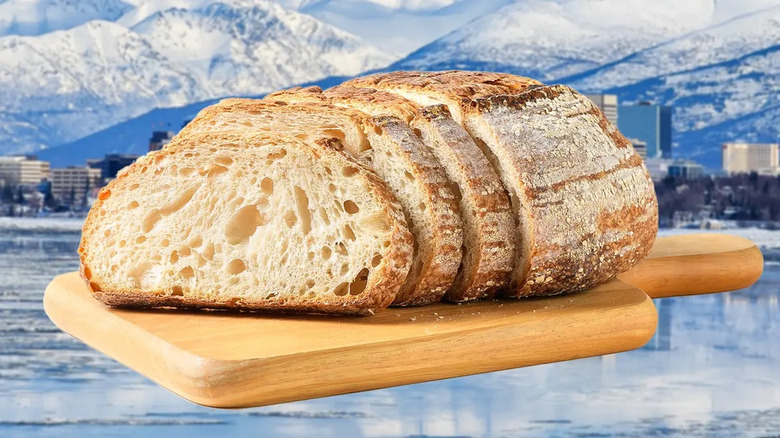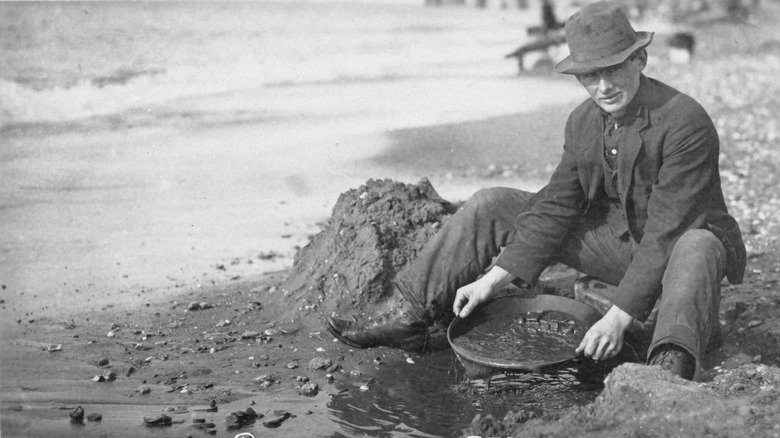Alaska's Cultural Connection To Sourdough Runs Deep
Locked in place inside their homes, an enormous number of Americans took to bread baking to fill the spaces of empty time that the COVID-19 pandemic imposed on their lives — soothing their anxieties by looking over their sourdough starters and letting out their frustrations by kneading the dough by hand. But Alaskans have had a cultural connection to sourdough long before any stay-at-home orders were put in place. In fact, the connection runs so deep that the word has taken on its own meaning among locals.
Local Alaskans use "sourdough" to describe anything and anyone with experience or longevity — even their fellow Alaskans. Referring to themselves and other long-time residents as "sourdoughs," the use is indicative of the sourdough's historic presence in Alaskan society. The tangy, fermented bread fed early 20th-century migrants who came to Alaska with hopes of striking luck in the form of gold or finding work within the state's fruitful fishing and oil industries. But, why sourdough bread and not something else?
Migrants weren't allowed to pass borders without food to sustain them on their journey, and a sack of flour and sourdough starter provided them with more food with less weight by cutting out the extra ingredients other varieties of bread require. In so, identifying as "sourdough" is a mark of pride for locals, suggestive of their survival and resilience. Considering how unimaginably cold winters in Alaska are, however, that wasn't without challenges. Especially if you were surviving on sourdough.
Alaskan sourdough, then and now
Fresh-baked sourdough bread is a treat, but for those traveling to and working in Alaska throughout the late 19th and 20th centuries, it was a necessity. As anyone who has prepared or attempted to prepare sourdough in different environments can attest, the cold Alaskan weather proved a challenge to proofing the starter. Humidity and temperature are two factors that can greatly impact the speed at which the bacteria in the starter feed. If it's warm and humid, your sourdough will proof much faster than normal, if it's cold and dry, it will likely take much longer. However, if it's too warm or too cold — as would've been the case for those in 20th-century Alaska — you run the risk of the bacteria dying.
As a result, there are many stories of men cuddling their starters to keep them from freezing overnight or carrying them with them, tucked inside their wool shirts to keep them warm while they were busy at work. In so, not only is the friendly, "sourdough" nickname a monicker of long-time residency in Alaska, but a symbol of acclamation to the region's challenging, yet character-building, environment. In so, sourdough — both as a bread and a moniker — remains a mark of honor for Alaskan people. Today, Alaska's indigenous community has even come to adopt the bread, while local restaurants mark the specific age of sourdough as a badge of quality.

